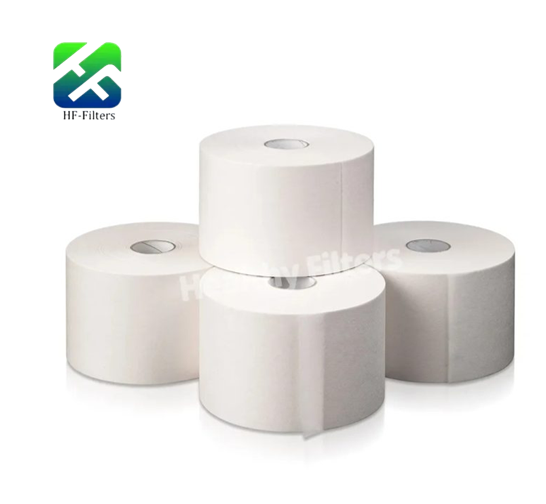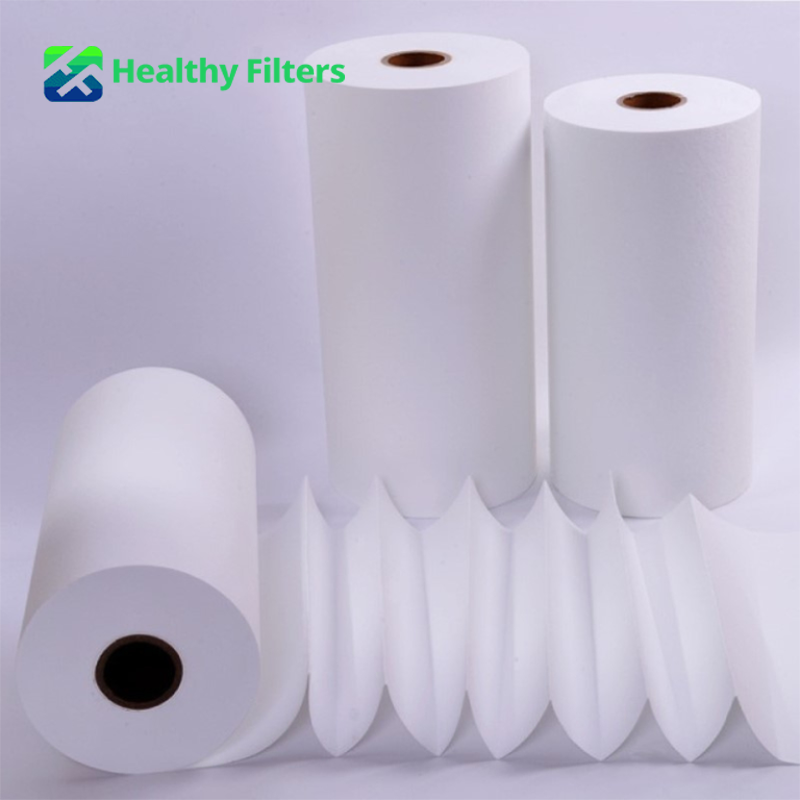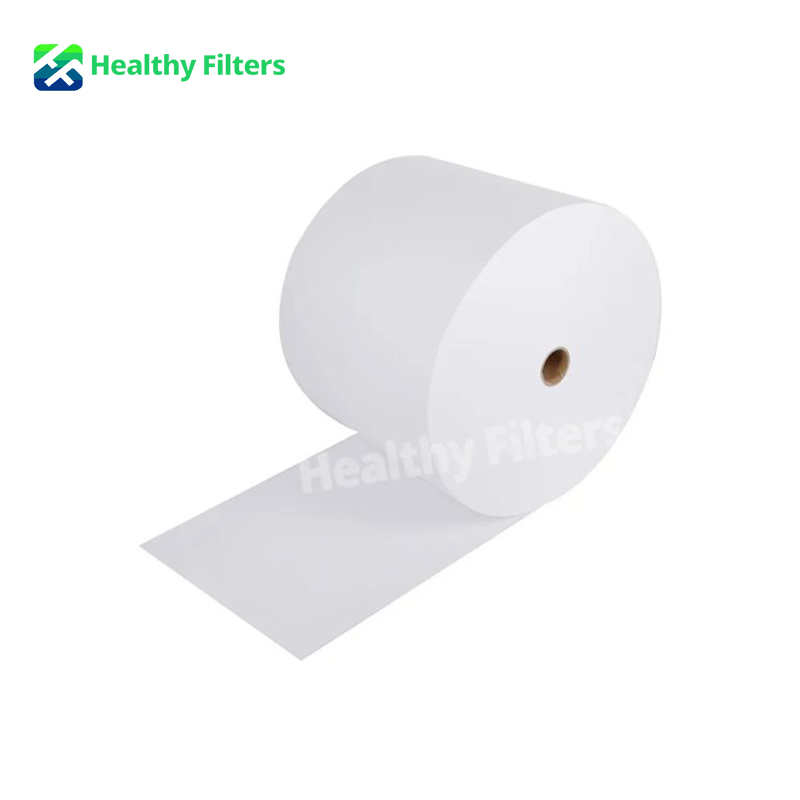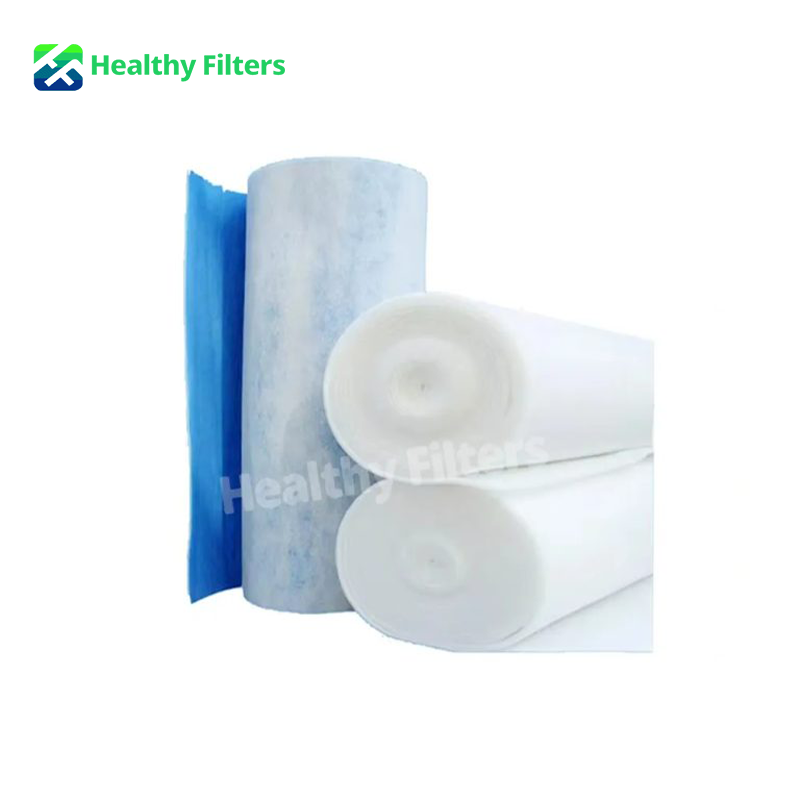Clean air keeps your home, office, or factory healthy, and air filters make it happen by trapping dust, allergens, and odors. Choosing the right filter material, like fiberglass or PP (polypropylene), can save you money and keep your air purifier running smoothly. Not sure which material works best for your needs? This guide breaks down the differences, so you can pick wisely. For top-notch solutions, check out Healthy Filters, a Shenzhen-based company crafting air filters since 2016. Their products, backed by certifications like ISO9001, CE, ROHS, SGS, FCC, ETL, and UL, deliver reliable performance. With a warehouse in Nashua, USA, they ship fast, and their custom designs fit any setup, from homes to industrial spaces.

Common Air Filtration Materials
Air filters rely on materials like fiberglass, PP, activated carbon, and cotton to clean the air. Each has unique strengths, whether capturing tiny particles or neutralizing smells.
Fiberglass excels in high-efficiency filters, while PP offers flexibility for general use. Activated carbon tackles odors, and cotton handles coarse dust. Knowing these options helps you choose the right filter for your space, whether it’s a dusty workshop or a hospital cleanroom.
Which Material Captures More Particles?
Particle capture is a big deal when picking a filter. You want something that grabs dust, pollen, and even microscopic pollutants without letting them sneak through. Fiberglass and PP both shine here, but they work differently. Fiberglass is a champ at trapping super tiny particles, often used in high-efficiency setups. PP, meanwhile, is great for bigger particles and versatile in many systems. Choosing the right one depends on what you’re filtering.
Fiberglass Efficiency
Fiberglass, like in the H13-H14-H15 Fiberglass Air Filter Paper, catches 99.95%-99.995%-99.9995% of 0.3-micron particles. It’s a go-to for HEPA filters in places like hospitals where clean air is critical.

PP Performance
PP filters, such as the Low-Resistance PP Synthetic Air Filter Roll, excel in M6-F9 ratings. They grab larger dust particles effectively, perfect for homes or offices with moderate dust.

Healthy Filters’ Offerings
The H13-H14-U15 Fiberglass Air Filter Paper delivers top-tier particle removal, making it ideal for sensitive environments needing the cleanest air possible.
How Durable Are Fiberglass and PP Filters?
Nobody wants a filter that falls apart too soon. Durability matters, especially if you’re running an air purifier constantly or in a tough environment. Fiberglass can withstand temperatures of 130-250 degrees and can hold its shape well in specific setups, but PP tends to be tougher overall. Your choice hinges on where you’re using the filter and how much wear it’ll face.
Fiberglass Durability
Fiberglass stays stable in high-airflow systems, like those in cleanrooms. It’s brittle, though, so careful handling during installation is key to avoid cracks.
PP Resilience
PP is flexible and resists tearing, making it great for varied settings. The Low-Resistance PP Synthetic Air Filter Roll holds up in demanding conditions without breaking down.
Healthy Filters’ Advantage
The Low-Resistance PP Synthetic Air Filter Roll offers long-lasting performance, reducing the need for frequent replacements in busy spaces like factories.
Can These Materials Handle Harsh Environments?
Your environment can be rough on filters. Dusty construction sites or humid coastal areas test a filter’s limits. Fiberglass works best in controlled settings, while PP adapts to tougher conditions. Knowing your space helps you pick a material that won’t quit early.
Fiberglass in Controlled Settings
Fiberglass shines in stable environments like labs, where it maintains high efficiency without degrading, as seen in the H13-H14-U15 Fiberglass Air Filter Paper.
PP in Tough Conditions
PP handles humidity and dust better, resisting mold and wear. It’s ideal for industrial sites or humid regions for high-dust areas.
Healthy Filters’ Solutions
The OEM Primary Cotton Filter tackles coarse dust in harsh settings, keeping air clean even in challenging industrial environments. Based on specific usage environments, Healthy Filters supports customizing different filter efficiencies and sizes.

Which Material Is More Cost-Effective?
Saving money matters when buying filters. Fiberglass often costs more upfront but excels in specific uses. PP tends to be cheaper and sometimes reusable, cutting long-term costs. Your budget and needs decide the winner.
Fiberglass Cost
Fiberglass, like in HEPA filters, has a higher price tag due to its high efficiency. It’s worth it for critical applications but can strain budgets for general use.
PP Affordability
PP filters, such as the Low-Resistance PP Synthetic Air Filter Roll, are budget-friendly and more suitable for primary filtration. Some are washable, saving you from frequent purchases.
How Do They Impact Airflow Resistance?
Airflow affects how hard your purifier or HVAC system works. High resistance means more energy use and wear on your equipment. Fiberglass can slow airflow due to its dense structure, while PP keeps things flowing smoothly. Picking the right material saves energy and extends system life.
Fiberglass Resistance
Fiberglass, with its tight weave, increases resistance, making systems work harder. It’s a trade-off for its excellent particle capture in filters like the H13-H14-U15.
PP Low Resistance
PP allows easier airflow, cutting energy costs. The Low-Resistance PP Synthetic Air Filter Roll is designed to keep systems running efficiently without clogging.
Healthy Filters’ Innovation
The Low-Resistance PP Synthetic Air Filter Roll balances filtration with smooth airflow, perfect for energy-conscious setups like office buildings.
Why Choose Healthy Filters for Air Filtration?
A reliable supplier makes all the difference when picking filters. You need quality products, expert advice, and fast delivery to keep your air clean. Healthy Filters stands out with their certified materials and global support, ensuring you get filters that fit your needs perfectly.
Certified Quality
Products meet strict standards like ISO9001, CE, and UL, guaranteeing durability and performance across applications, from homes to factories.
Global Accessibility
With a warehouse in Nashua, USA, as noted on their distributor page, you get quick shipping, so replacements arrive when you need them.
Tailored Solutions
Custom options, detailed on their solutions page, let you find filters for unique setups, ensuring top performance and longevity.
FAQ
Q1: Are fiberglass filters tougher than PP filters?
A: PP is more flexible and resists tearing, making it durable in varied settings, while fiberglass holds up in stable, high-airflow systems.
Q2: Can fiberglass and PP filters handle humid environments?
A: PP resists mold better in humid areas, while fiberglass is ideal for controlled settings like cleanrooms, not damp spaces.
Q3: Which filter material saves more money?
A: PP filters, like the Low-Resistance PP Synthetic Roll, are cheaper and often washable, cutting long-term costs compared to pricier fiberglass.

